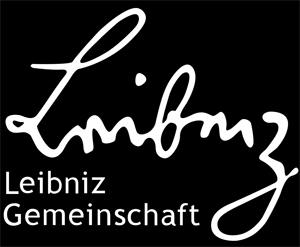Section Experimental Characterization
Section Experimental Characterization
Mission
The section agglomerates a comprehensive spectrum of tools to characterize the materials grown at the institute and of scientific partners. This is done as scientific service by providing fast feedback for crystal growers to improve their materials and with the aim to perform basic research in the field of solid-state physics and crystal growth. Our tools comprise structural, optical, electrical and thermoanalytical techniques; they cover all length scales from the macroscopic to the atomic scale. Combining these experimental techniques, we aim at an interdisciplinary effort at tackling urgent questions in solid state physics and at providing reliable materials parameters.
Research activities
The section is engaged in studying basic materials properties. This comprises electrical, optical and structural properties. We focus on semiconductors and dielectrics. Materials under study are III-Nitrides, Oxides and classical III-V- and group IV semiconductors. Doping, atomic defects, epitaxial heterostructures, growth and relaxation phenomena as well as optical properties are the most important topics. The section has strong collaboration with groups working in solid state theory. Recently we have a strong activity are developing in-situ characterization techniques in transmission electron microscopy and x-ray diffraction.
In addition, the section operates the joint laboratory for electron microscopy (Joint Lab for Electron Microscopy Adlershof (JEMA)) and the test structure lab with the Humboldt-Universität zu Berlin.
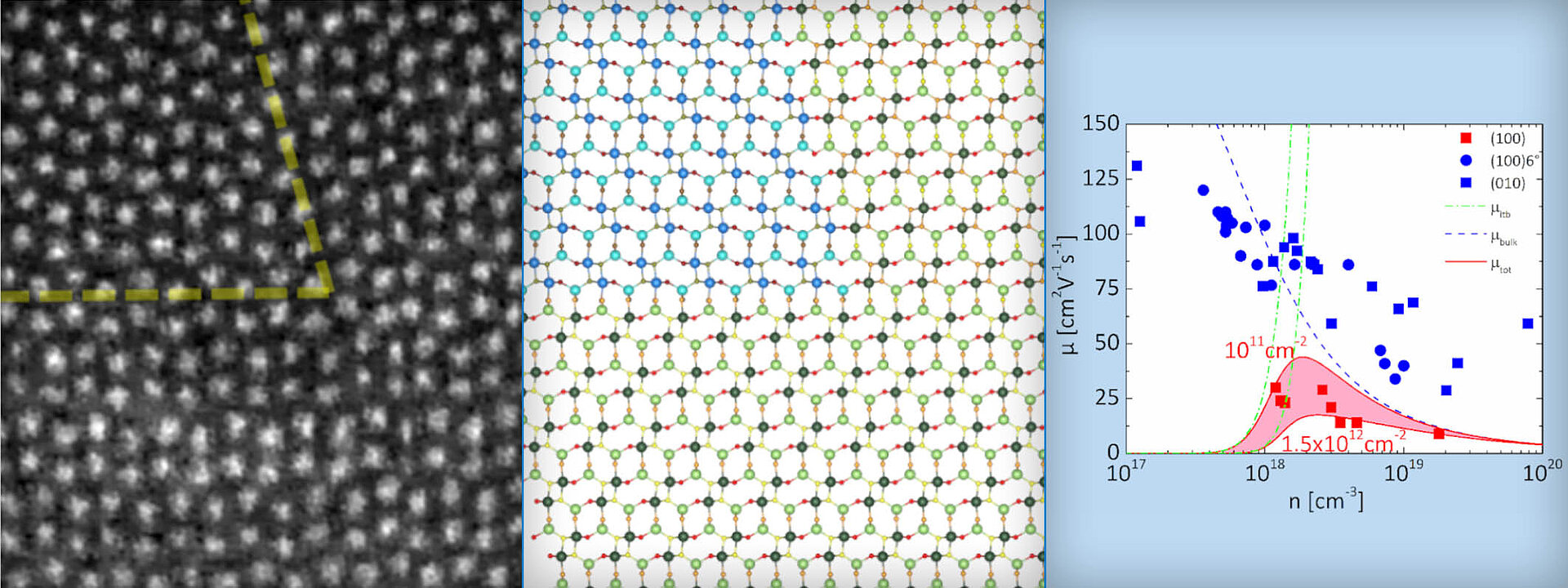
Head of Section
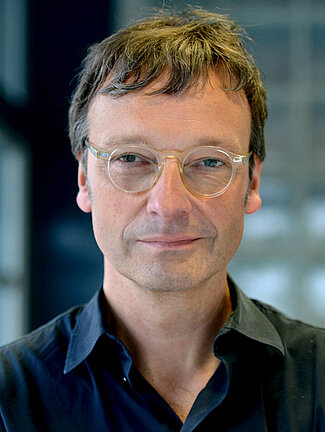
Topics
X-Ray Imaging
Our goal is to use and develop synchrotron-based X-ray techniques to study the real structure of single crystals on all scales. Recent development of 4th generation synchrotron radiation sources and instrumentation offers new approaches to study crystalline materials from atomic via nano- towards macroscopic scale. Using X-rays is paramount for experiments on crystals in-situ (e.g. during growth, treatment or operation) and this way provides a deep insight into dynamics and transitions of crystal structures.
We study real structure of crystals and its impact on materials properties as a function of various environmental parameters. This spans from analysis of atomic displacements that define how crystals behave under influence of external fields, to imaging of lattice inhomogeneities that affect optical or electronic characteristics of semiconductor materials and contain information about local stoichiometry. Such imaging methods are ideal to correlate crystal structure and function within recent semiconductor devices.
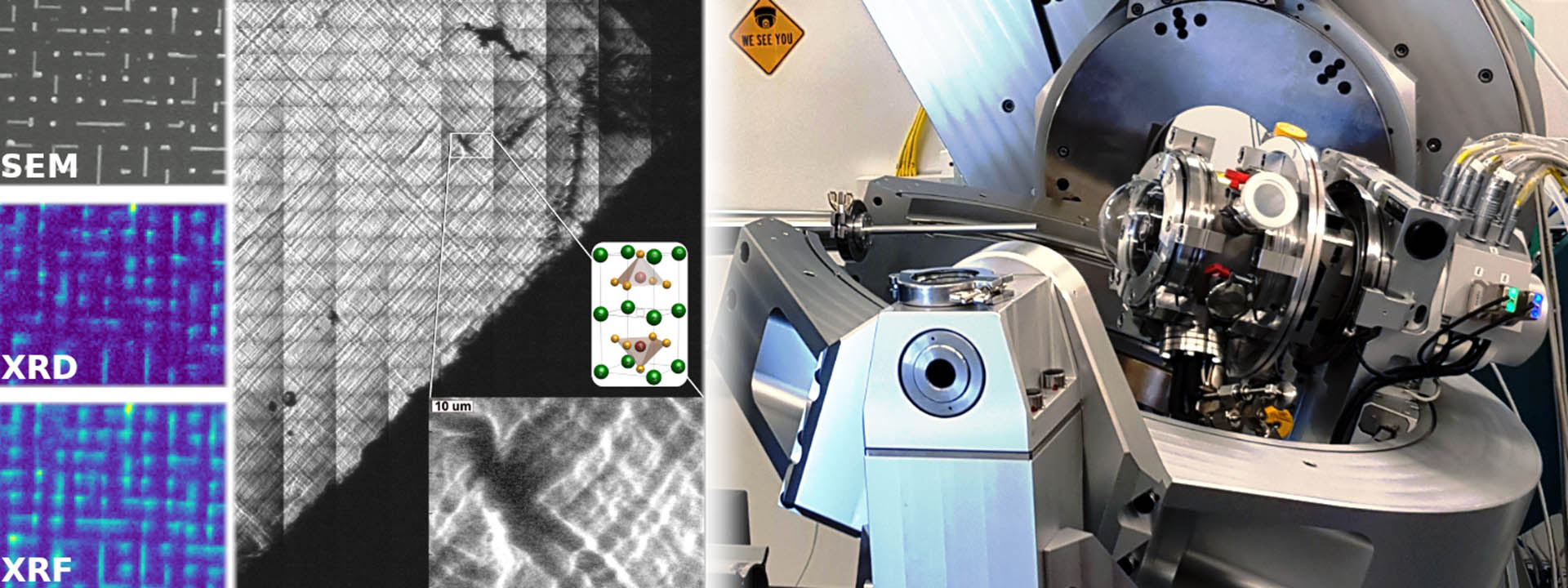
Kontakt
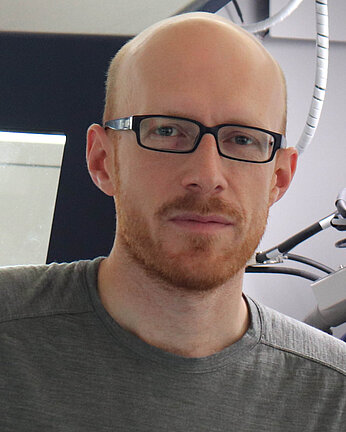
Electron Microscopy
The electron microscopy group focuses on the relation between physical properties and structure of semiconductors and oxides and of epitaxial materials by cutting edge electron microscopy techniques. By discovery of novel phenomena, their fundamental understanding and by developing predictive models we aim at improving the materials perfection and open perspectives for their technological applications. To reach these goals we combine the whole spectrum of structural and analytical techniques and are engaged in methodological developments.
We study real structure of crystals and its impact on materials properties as a function of various environmental parameters. This spans from analysis of atomic displacements that define how crystals behave under influence of external fields, to imaging of lattice inhomogeneities that affect optical or electronic characteristics of semiconductor materials and contain information about local stoichiometry. Such imaging methods are ideal to correlate crystal structure and function within recent semiconductor devices.
Stefan Mohn, Natalia Stolyarchuk, Toni Markurt, Ronny Kirste, Marc P. Hoffmann, Ramón Collazo, Aimeric Courville Rosa Di Felice, Zlatko Sitar, Philippe Vennéguès, Martin Albrecht
Polarity control in group-III nitrides beyond pragmatism
Phys. Rev. Appl. 5, 054004 (2016)
DOI: 10.1103/PhysRevApplied.5.054004
Charlotte Wouters, Toni Markurt, Martin Albrecht, Enzo Rotunno, Vincenzo Grillo
Influence of Bloch wave state excitations on quantitative HAADF STEM imaging
Physical Review B 100, 184106 (2019)
DOI: 10.1103/PhysRevB.100.184106
Robert Schewski, Konstantin Lion, Andreas Fiedler, Charlotte Wouters, Andreas Popp, Sergey V. Levchenko, Tobias Schulz, Martin Schmidbauer, Saud Bin Anooz, Raimund Grüneberg, Zbigniew Galazka, Günter Wagner, Klaus Irmscher, Matthias Scheffler, Claudia Draxl, Martin Albrecht
Step-flow growth in homoepitaxy of β-Ga2O3 (100)—The influence of the miscut direction and faceting
APL Mater. 7, 022515 (2019)
https://doi.org/10.1063/1.5054943
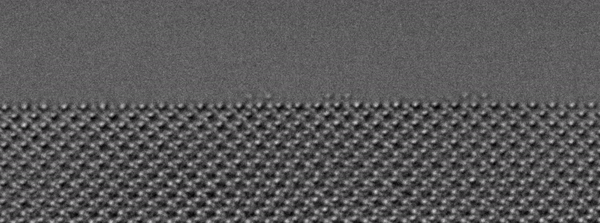
Contact

X-Ray Diffraction
Using state-of-the-art X-ray techniques, we aim to achieve a fundamental understanding of the correlation of structural and physical properties in crystalline materials. These investigations will also contribute to improving material perfection and pointing out paths for possible technological applications. For this purpose, we have a number of highly specialized instruments at our disposal at IKZ, including sophisticated experiments at synchrotron radiation sources.
Besides the determination of crystal orientation and crystal phases, we are primarily concerned with the elucidation of the real structure in bulk crystals and epitaxial layer systems. For ferroelectric thin films, we aim at a fundamental understanding of phase and domain formation, whereby phase transformations are identified and characterized by complex in situ experiments. For the verification of real structure models, corresponding simulations are developed.
Martin Schmidbauer, Albert Kwasniewski, Jutta Schwarzkopf
High-Precision Absolute Lattice Parameter Determination of SrTiO3, DyScO3 and NdGaO3 Single Crystals
Acta Cryst. B 68, 8-14 (2012)
DOI: 10.1107/S0108768111046738
Martin Schmidbauer, Dorothee Braun, Toni Markurt, Michael Hanke, Jutta Schwarzkopf
Strain Engineering of Monoclinic Domains in K0.9Na0.1NbO3 Epitaxial Layers: A Pathway to Enhanced Piezoelectric Properties
Nanotechnology 28, 24LT02 (2017)
DOI: 10.1088/1361-6528/aa715a
Laura Bogula, Leonard von Helden, Carsten Richter, Michael Hanke, Jutta Schwarzkopf, Martin Schmidbauer
Ferroelectric Phase Transitions in Multi-Domain K0.9Na0.1NbO3 Strained Thin Films
Nano Futures 4, 035005 (2020)
DOI: 10.1088/2399-1984/ab9f18
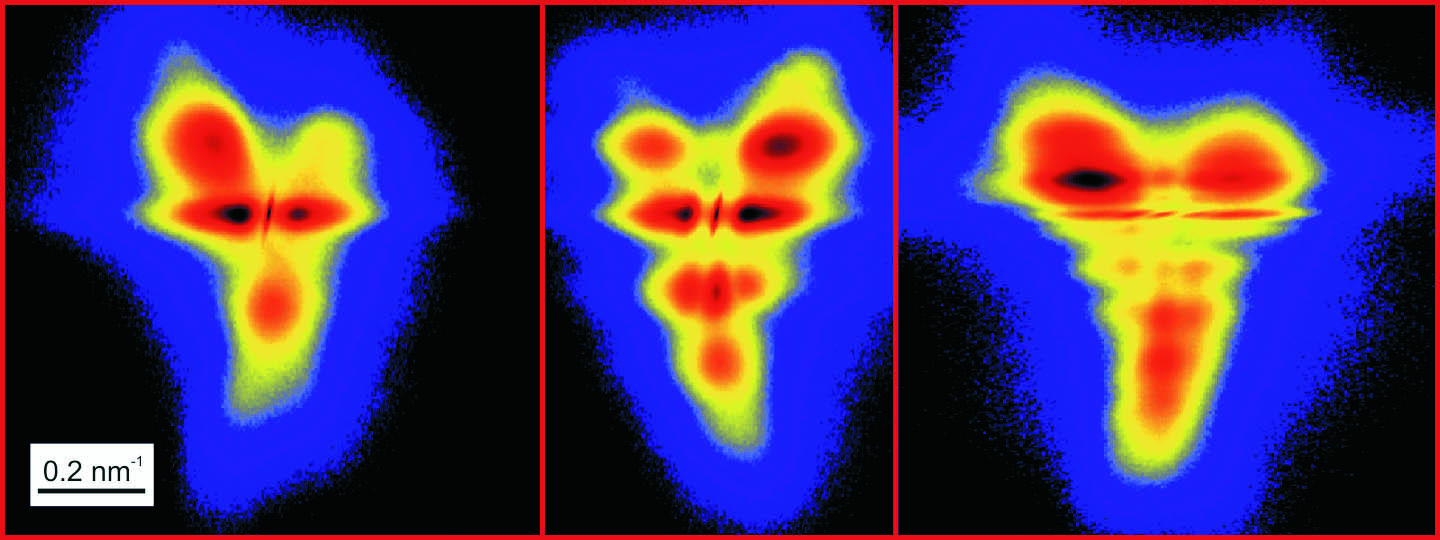
Contact
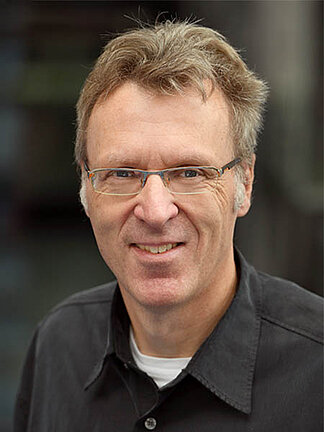
Advanced in-situ TEM techniques for nanoscale investigations of crystals
Main challenges for electron microscopy include investigations of dynamic processes in-situ, in real time and under different environmental conditions. This allows observation of important processes, such as, crystal growth, phase transitions and ionic transport. We are designing in-situ TEM experiments for bridging the gap between theoretical hypotheses and experimental reality. The capability to perform measurements under different temperature, biasing and gas pressure conditions while simultaneously analyzing the corresponding structural changes, would allow for unique insights into nanoelectronics..
IKZ has a wide variety of MEMS-based TEM specimen holders, including a Protochips fusion holder, for heating and biasing experiments, and an atmosphere holder, for high gas pressure environment and heating experiments, enabling atomic resolution characterization of solid and solid-gas reactions in real time.
Our objective is to achieve atomic-level structural and chemical characterization of a wide range of materials, including semiconductors and dielectrics, using in-situ TEM. One of our main research focuses is to retrieve information from materials structural dynamics, such as, resistance switching, polarization fields and dislocations formation under applied excitations. This will allow identification of new transient states and correlate the material´s structure to their functionalities. We are also studying the growth kinetics and thermodynamics in functional materials by investigating phase formation and kinetics of crystallization at atomic scale. This provides fundamental insights into dynamic processes that were previously inaccessible.
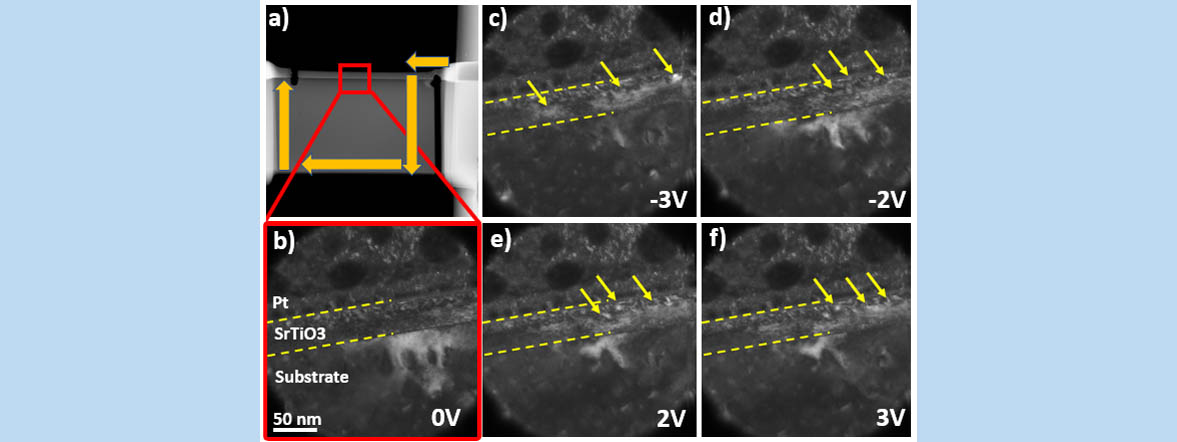
Contact
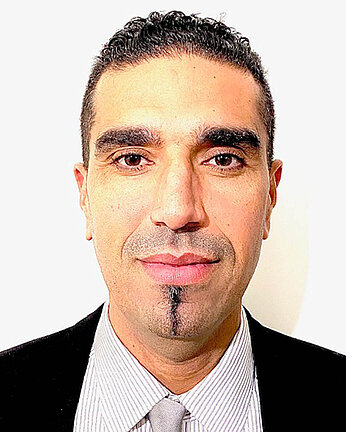
Transport and Electrical Properties
Control over the electrical conductivity of semiconductor crystals is essential prerequisite to realize the semiconductor devices needed in modern electronics. To assess the electrical properties of the semiconductors grown at IKZ we use current transport and capacitive measurements to determine, e.g., the concentration and mobility of free charge carriers, the concentration of dopants and that of compensating impurities or defects in close relation to growth and doping conditions.
Conductivity and Hall effect measurements (20-1100 K), deep level transient spectroscopy (20-800 K) and photo-thermal ionization spectroscopy as well as appropriate contact preparation techniques are continuously adapted and extended to meet the different requirements the various semiconductor crystals impose, e.g., additional photoexcitation for wide-bandgap semiconductors. Our present focus is on semiconducting oxides with potential for power electronics and resistive switching.
Andreas Fiedler, Robert Schewski, Michele Baldini, Zbigniew Galazka, Günter Wagner, Martin Albrecht, Klaus Irmscher
Influence of incoherent twin boundaries on the electrical properties of β-Ga2O3 layers homoepitaxially grown by metal-organic vapor phase epitaxy
J. Appl. Phys. 122, 165701 (2017)
DOI: 10.1063/1.4993748
Klaus Irmscher, Zbigniew Galazka, Mike Pietsch, Reinhard Uecker, Roberto Fornari
Electrical properties of β-Ga2O3 single crystals grown by the Czochralski method
J. Appl. Phys. 110, 063720 (2011)
DOI: 10.1063/1.3642962
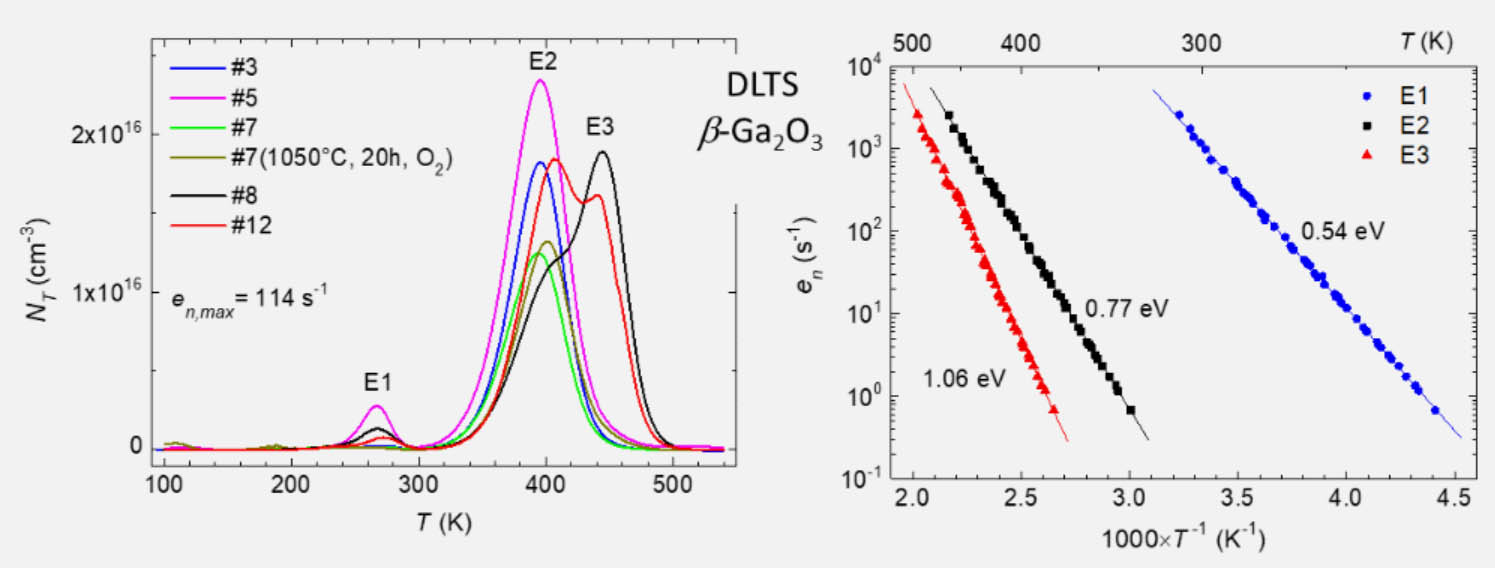
Contact
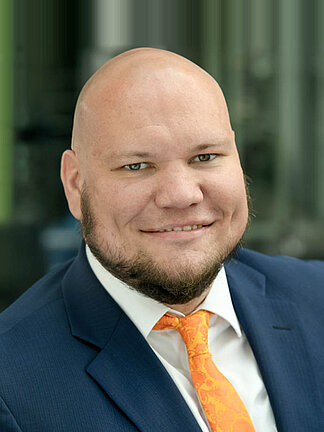
Optical Spectroscopy
Our mission is to gather a detailed understanding of fundamental physical properties of bulk crystals and thin films. In this context, optical spectroscopy represents a highly versatile analytical characterization tool. We focus on the investigation of optical processes, which hold information about material-specific properties. This includes intrinsic characteristics of the system, such as band gaps or vibronic states, as well as extrinsic properties related to structural- or point defects. We are conducting research on novel crystal systems that have been grown in-house, as well as those supplied from collaborating partners.
Currently, the materials under investigation comprise novel oxides for memristive applications, as well as III-Nitrides for optoelectronics. To study their physical properties, we have a variety of experimental methods at our disposal. Next to widely used techniques such as emission-, absorption-, Raman spectroscopy, we also perform high spatial resolution cathodoluminescence spectroscopy. In addition, self-developed systems offer the possibility of measuring parameters which are experimentally difficult to access. This includes transmission spectroscopy of volume crystals at very high temperatures > 1000°C for studying the temperature dependence of bandgaps or defect absorption bands. Moreover, for detecting inhomogeneities in large volume crystals, we apply 3D tomographic analysis of scattered light.
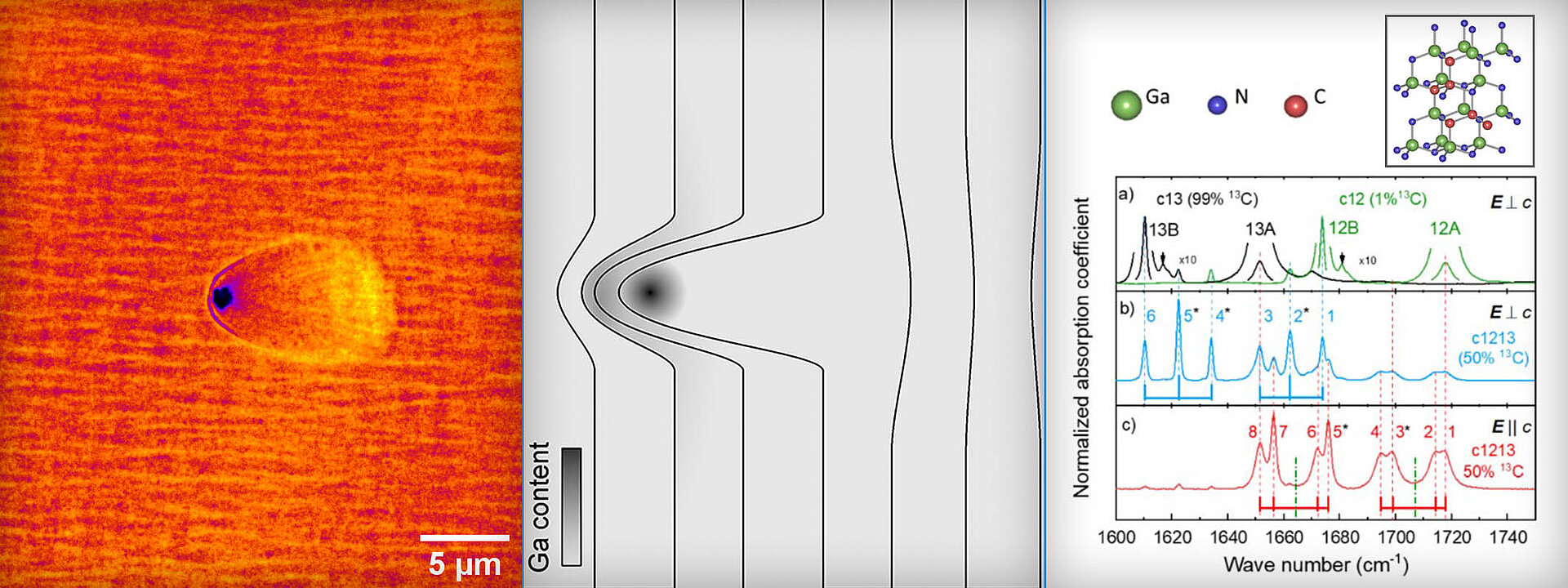
Contact

